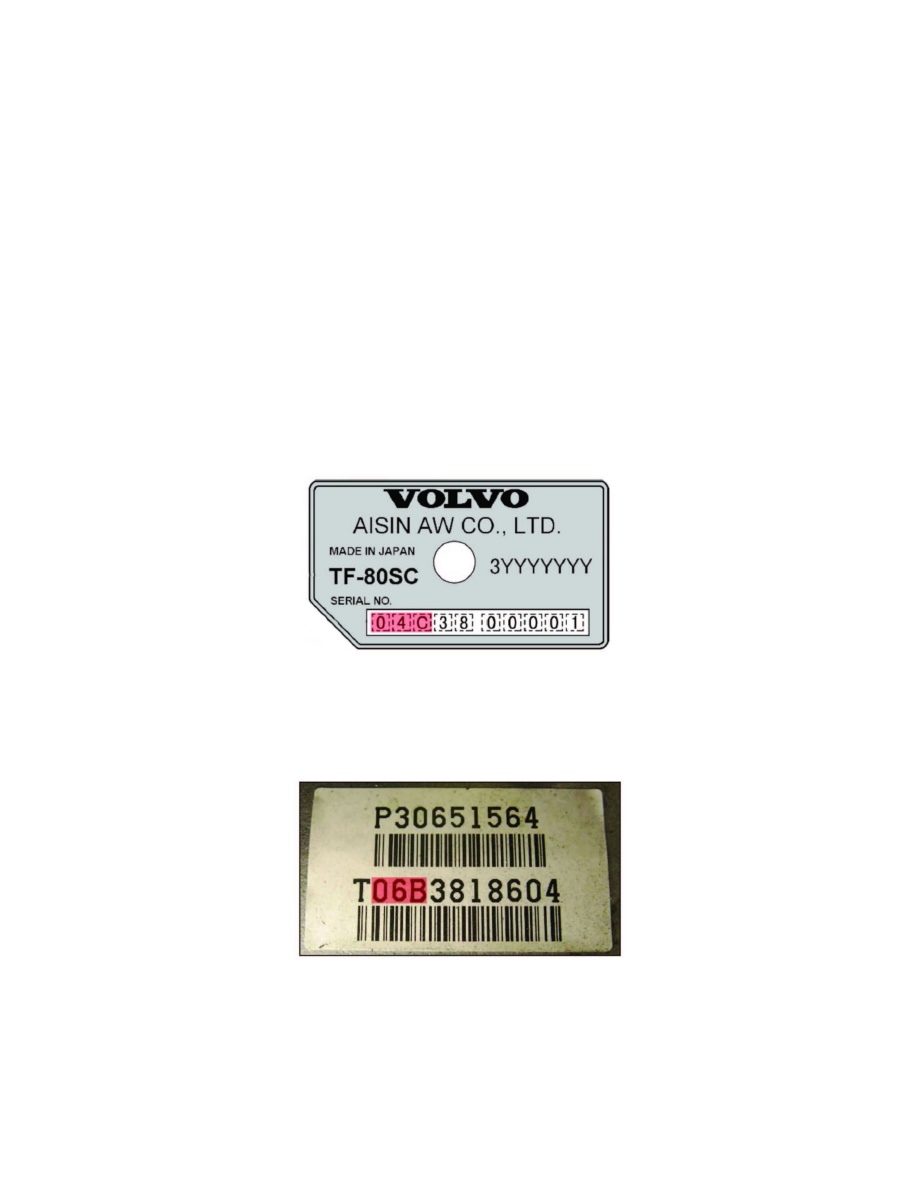XC90 FWD L6-3.2L VIN 98 B6324S (2007)

MAF (Mass Airflow Sensor) & ECM.
2.
Remove filler plug (Torx 55) and place a clean funnel in the filler hole.
3.
Temporarily install the air cleaner with the MAF & ECM so that the engine can be started.
4.
Start the engine & leave it running for steps 5-9.
5.
Move the shifter from P to D. Stop at each position for at least 2 seconds. Do this twice.
6.
With the shift lever in P, raise the vehicle and place a receptacle under the transmission.
7.
Remove the level plug (Torx 40). Lower the vehicle & add oil to the transmission until it starts to run out of the level plug hole beneath the
vehicle.
8.
Allow the transmission to warm up by letting the engine idle in P. During this time, some oil will be running out.
9.
When the oil temperature reaches 50°C/120°F, reinstall the level plug & turn off the engine.
10.
Reinstall the filler plug (Torx 55). Install the lower engine cover, the air cleaner correctly & the air snorkel.
A full version of the oil level checking procedure, can be found in VIDA. Note that it is not necessary to remove the air cleaner & ECM on
S60R/V70R.
Interpreting the Serial Number:
The serial number is on the black & silver metal ID plate on top of the transmission.
The first two digits indicate the year: 04 = 2004, 05 = 2005, 06 = 2006, etc...
The 3rd digit indicates the month: A = Jan, B = Feb, C = Mar, etc...
On vehicles with the 3.2 liter engine, the ID plate is difficult to see because it is located under the power steering pump. The production year & month
can instead be read off of the white sticker located on the transmission case directly below the brake master cylinder.
Note:
Refer to TNN 40-02 for applicable TCM software upgrades for certain drivability complaints and/or DTCs. Not all drivability complaints and/or
DTCs can be fixed by TCM software so VIDA should be used to properly fault trace DTCs while other TNNs can be used to remedy certain
drivability complaints and/or DTCs. In the case that the complaint is not directly addressed by software and once the cause of the complaint is
corrected, TCM and ECM software upgrades should then be attempted to be sure the ECM/TCM have the latest software.
